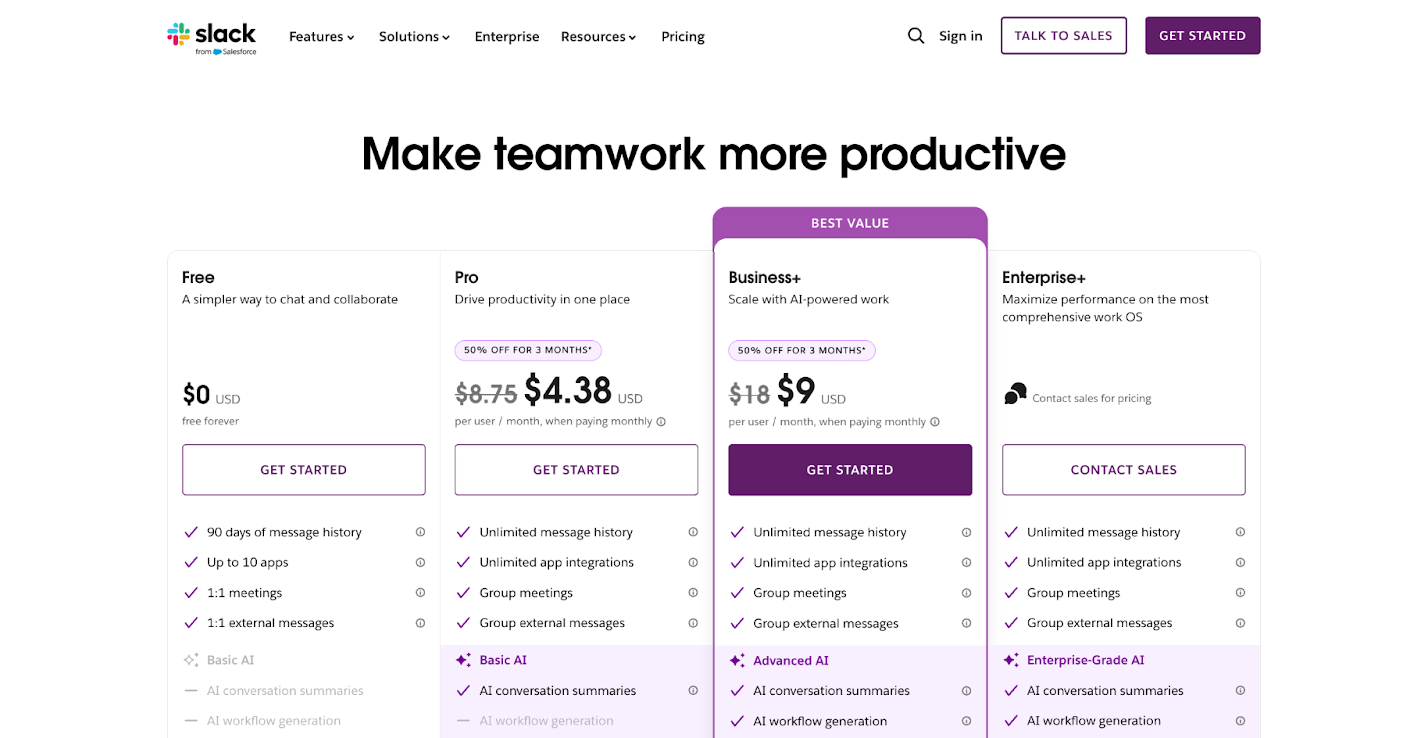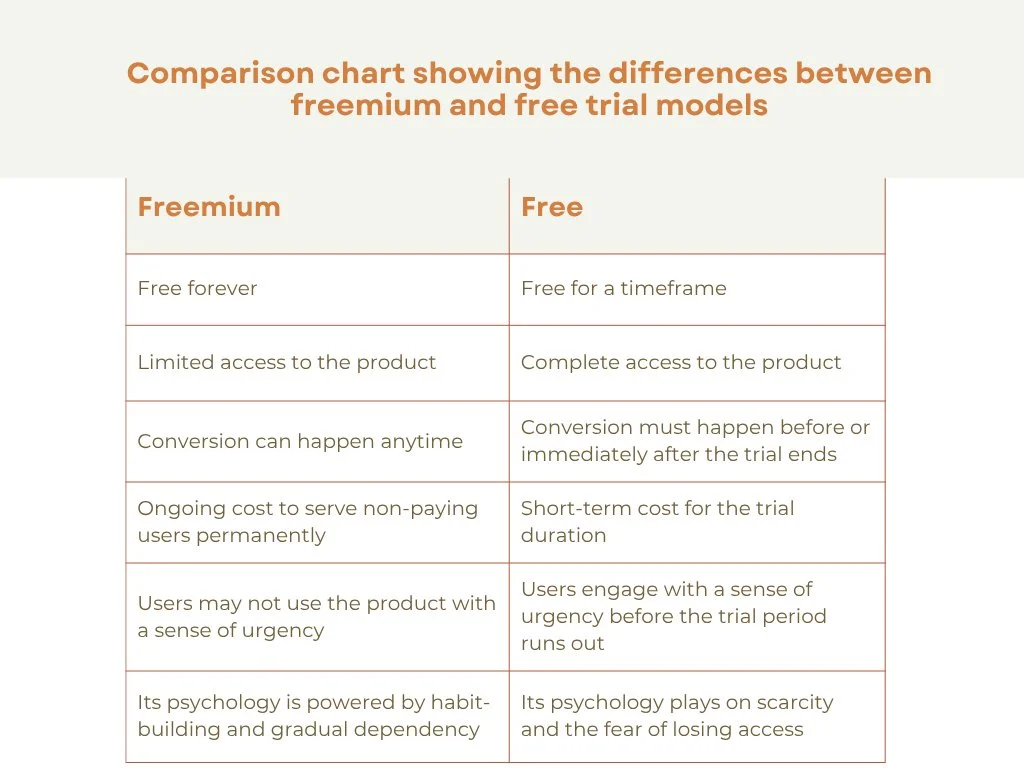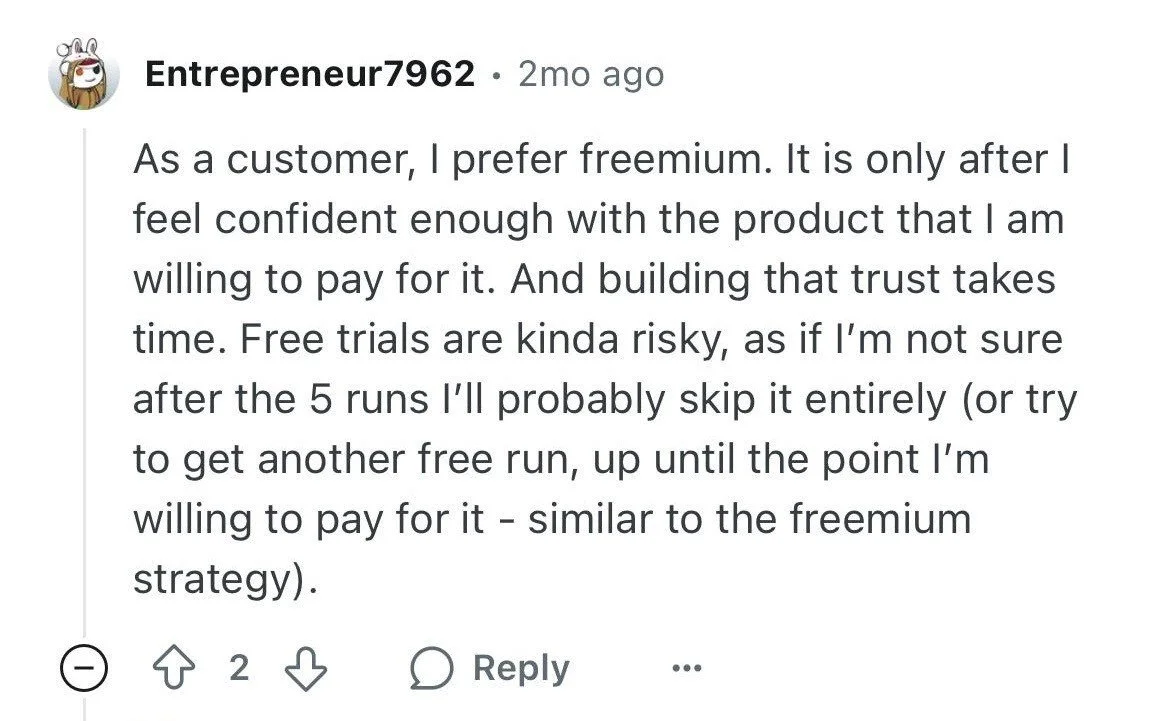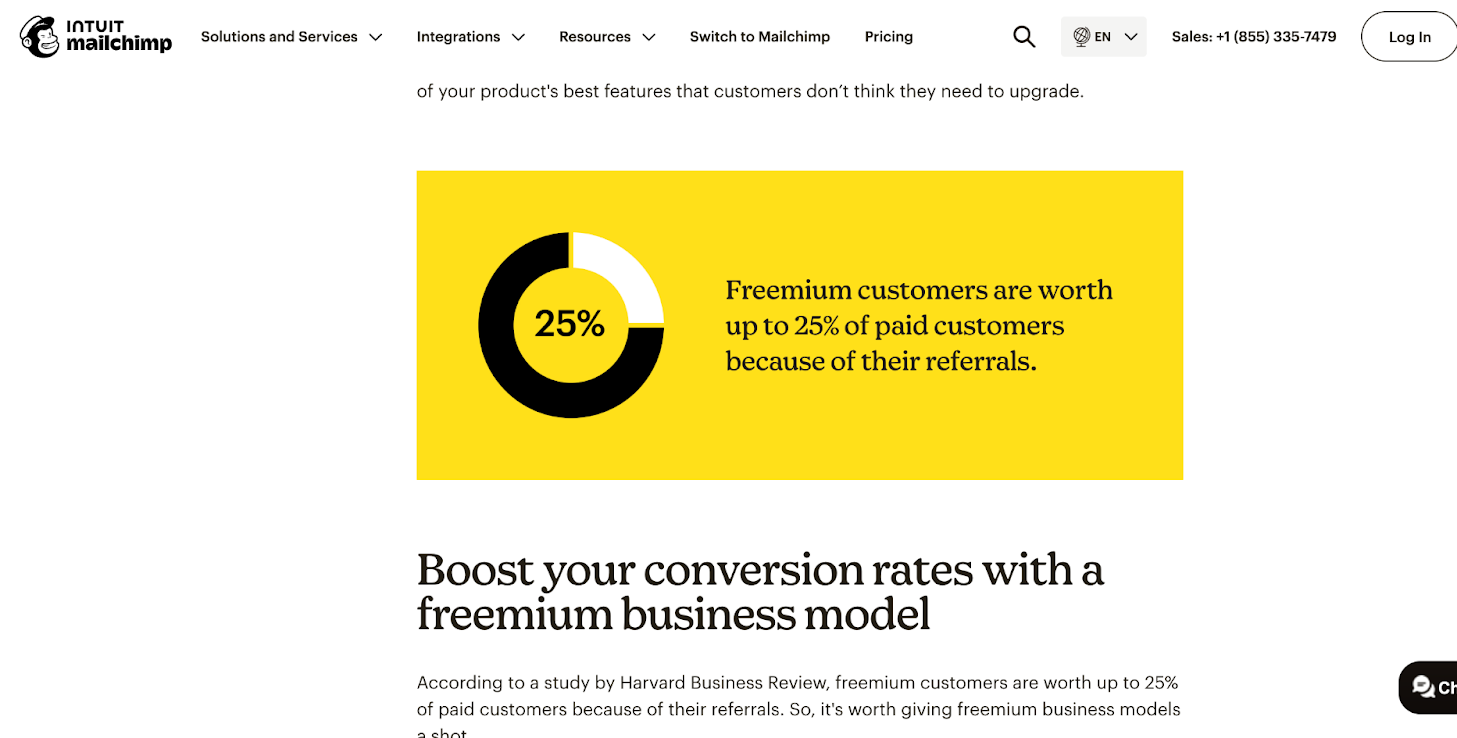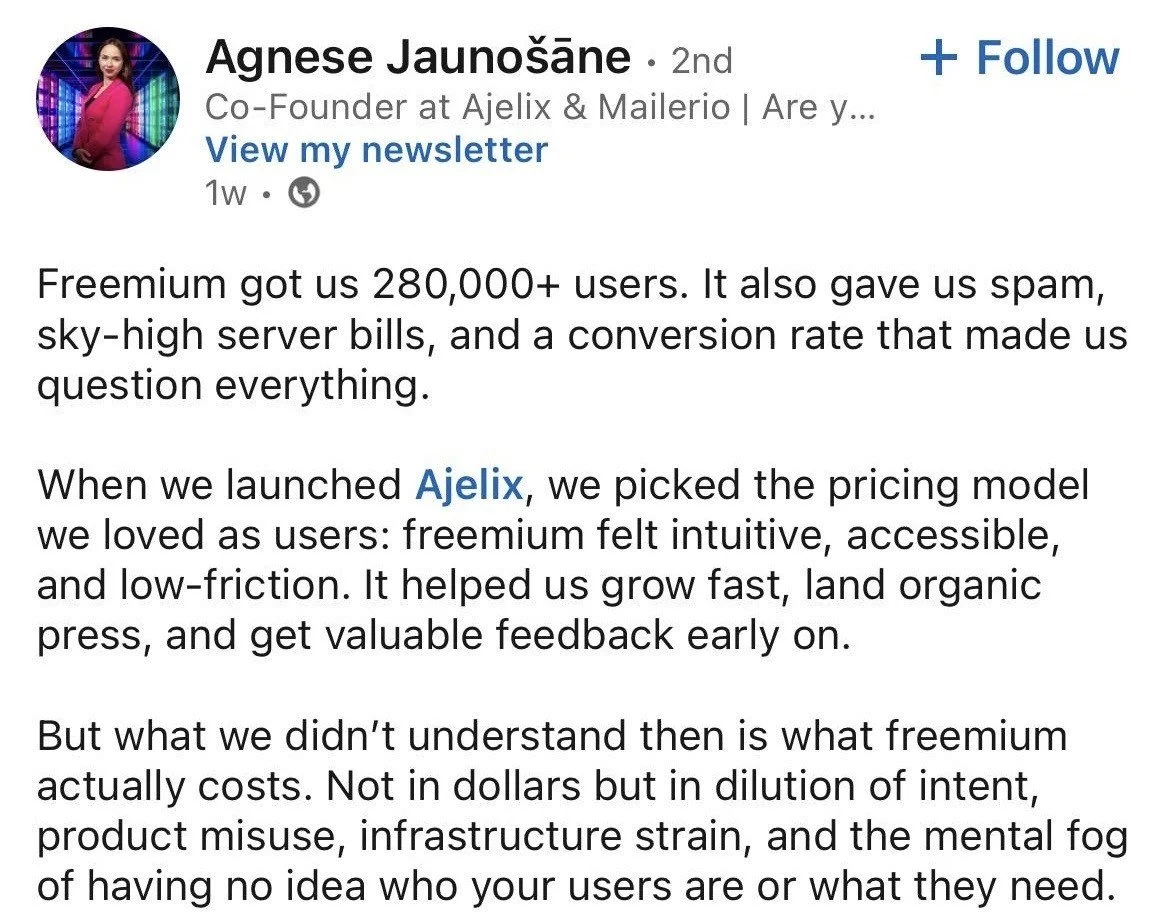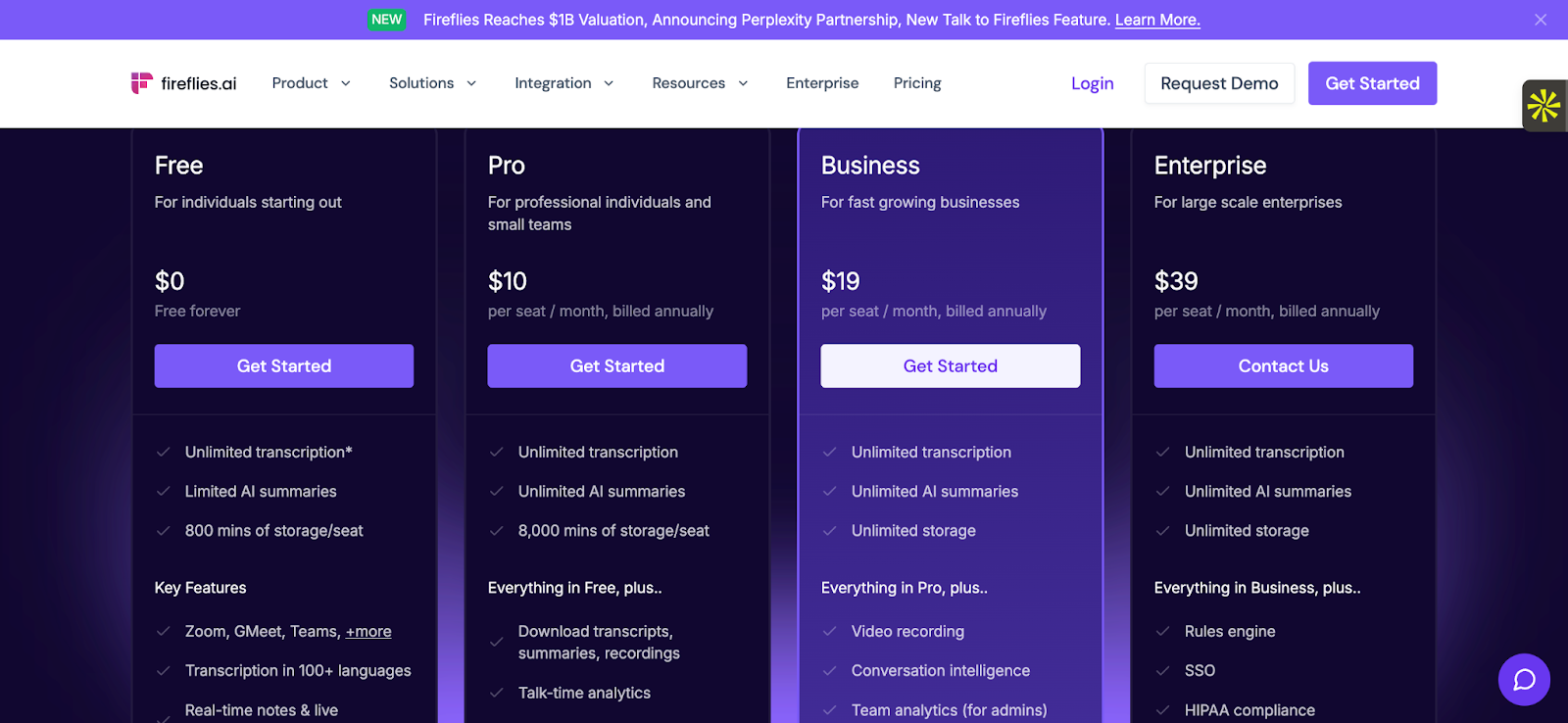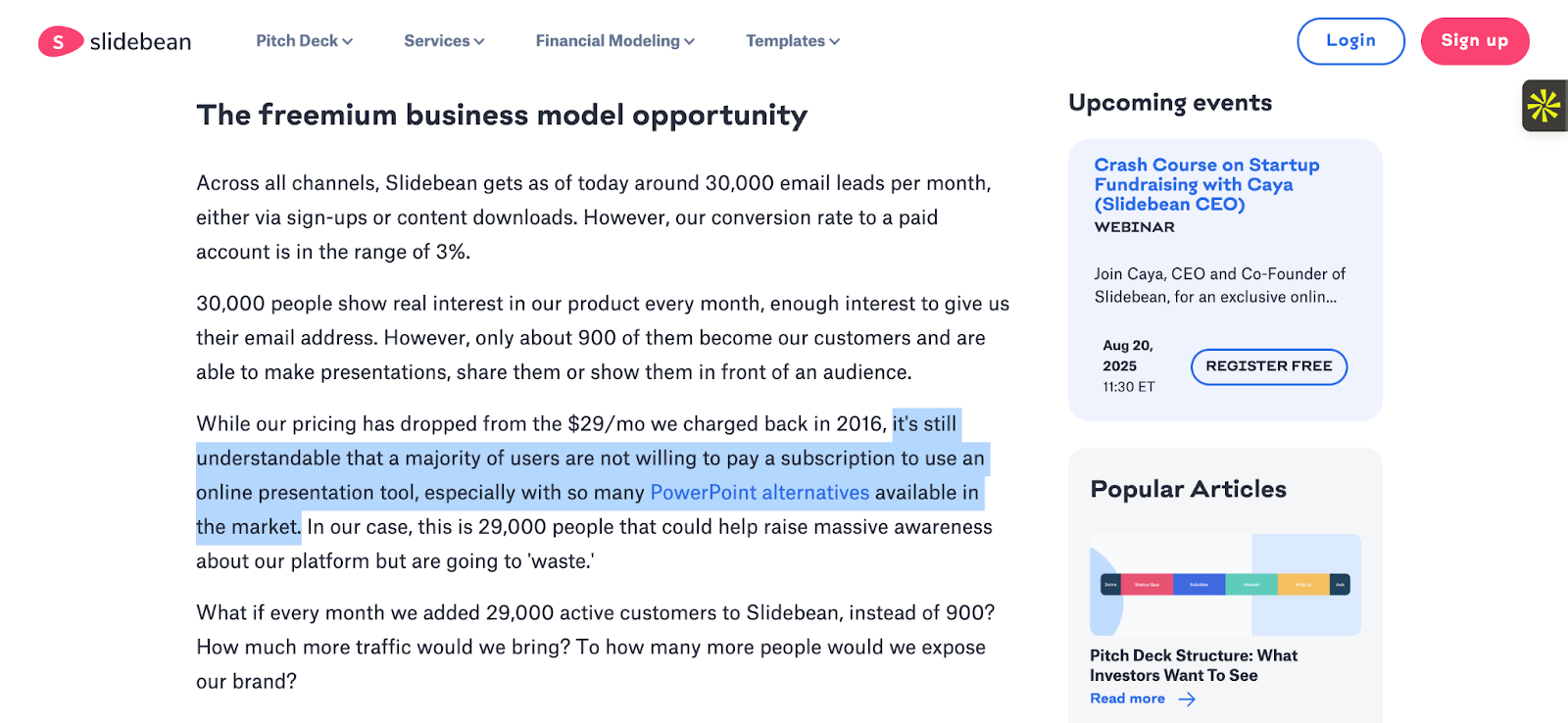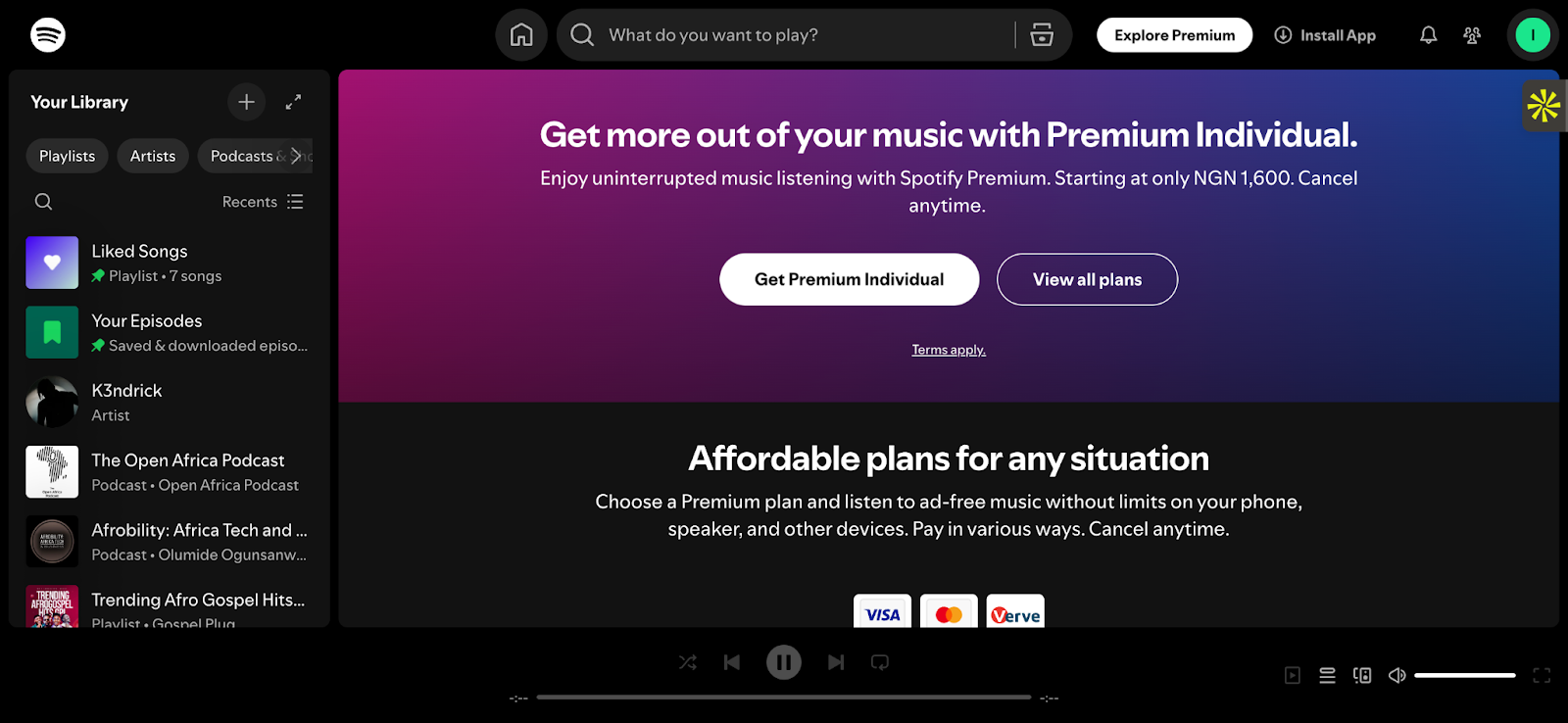Is the freemium model still working for SaaS in 2025—or just a lead trap?
If you have a mobile phone, there’s a likelihood that you’re signed up for one or more freemium products. One way to find out is to swipe through your App Library.
A freemium product allows you to use it without paying for the premium version. Think Slack, Spotify, Canva, Grammarly, and more.
Source: Slack
You can use freemium products for a long time, but accessing extra features may require a fee. Many B2B SaaS founders struggle to understand the freemium model and how it differs from closely related services like free trials, paywalls, and ad-supported models.
In this article, I’ll explain:
Freemium vs free trial models
Freemium and free trial models are closely related customer acquisition strategies. Both models give limited access to SaaS products, allowing users to experience the value before they become financially committed. However, these concepts differ significantly from one another.
The freemium model often offers access to limited functionality. Users don’t have to pay for the product since they’re happy with the basics. In contrast, free trials give access to all features for a limited time.
After users exceed the trial period, they either have to upgrade or lose access to the product’s functionalities.
Why the freemium model works
Here are some benefits of adopting the freemium model:
1. Drives user engagement and retention
The freemium model allows users to explore and get familiar with your product. The more value it offers them, the higher the chances of upgrading to premium, deepening user retention.
2. Enables access to data
Having a large free user base offers more access to valuable data on behavior, product usage, and preferences. You can use this data to improve the product and personalize subsequent marketing efforts.
3. Serves as a marketing tool
Satisfied users of the free version may act as unofficial brand ambassadors. They’ll happily talk about your product and encourage other prospects to sign up.
Source: Mailchimp
4. Offer potential revenue opportunities
When offering free services, you can still upsell premium features to convert free users to paid ones. This possibility is higher when customers recognize the value of your product. They may likely upgrade to access the paid features, increasing your business revenue.
Source: X
Downsides of the freemium model
Here are some of the disadvantages of the freemium model:
1. Increases operational costs
Source: LinkedIn
As Ajelix’s experience shows, adopting the freemium model means you’ll spend more because free users drive operational costs with no contribution to direct revenue. Some notable recurring expenses include data storage, server scaling, customer support, and more.
2. Attracts freebie seekers
Many users sign up for free without a plan to transition into paid tiers. Converting them will be difficult, especially if the free version offers much value. Depending on a small percentage of paid users for revenue generation can lead to unpredictable income.
3. Overloads customer support
While freemium users don’t directly generate revenue, they often require the same support as paying customers. This creates an uneven burden on customer support teams, slowing their response time and potentially frustrating paid users, who financially sustain the product.
Freemium in 2025: What’s changed?
Consider some factors affecting the freemium model in 2025:
1. Market saturation
Many SaaS and consumer apps offer free tiers, creating stiff competition for user attention. Any product that wants to stand out needs to offer more than the basic free version. SaaS companies must infuse strong branding and unique value propositions to lure users away from their established competitors.
2. Smarter users
Today’s users are more perceptive. They’ve learned how to maximize free features on freemium products without upgrading. Some may create several free accounts or combine tools to achieve their goals.
Companies have been forced to rethink their sales and marketing strategies to avoid being outsmarted by clever non-paying users.
3. AI expectations
AI-powered features are becoming mainstream across industries. Now, users expect some form of intelligent assistance, even for freemium products. This AI-powered help comes with higher infrastructure costs. And it may be more costly if free users remain unconverted.
Source: fireflies.ai
4. Tighter budgets
Global economic downturn has made users more reluctant to upgrade to paid plans. Rather than become paying subscribers, they’ll seek alternatives. Even paid users downgrade from existing subscriptions to save their money.
5. Freemium fatigue
As shown above, some users get tired of limited trials, upsell prompts, and other aggressive freemium tactics. If your company relies on forceful pitching of paid services, it might lose users. Freemium offerings need to look valuable and respectful.
When does freemium become a lead trap?
While the freemium model is praised for its ability to drive user acquisition, it can spiral into an unfavorable situation where you acquire users who never want to buy. Here’s when freemium stops being a growth engine:
1. Low-intent signups
Freemium is risky when users have no genuine interest in upgrading to the paid version of your product. They’re usually tagged as tourists who sign up out of boredom or curiosity. Low-intent signups often inflate acquisition numbers without adding real value to the business.
2. Clogged funnels
When free users fill the top of the funnel with unqualified users, bottlenecks are created. Your CRM is filled with users who never buy but still require some engagement or nurturing. This congestion forces your sales team to filter through a pile of low-quality leads to find the valuable prospects.
3. Misleading metrics
Freemium numbers often look attractive on the surface. Large email lists, high signups and an active user number can look attractive to investors. However, if these numbers comprise free users who don’t upgrade to become paid subscribers, they’re vanity metrics.
Source: slidebean
4. Brand devaluation
If you give away too much for free, users may begin to perceive your product as a “free tool.” This outlook can be damaging, especially if your competitors have been positioned as premium from the start. Some users see “free” as “lower quality” or “less professional.”
How to make freemium work in today’s SaaS space
Getting the freemium model right is more than giving features away. You need a clear plan to convert free users into paying and loyal customers. These tips below can help you make it work:
1. Design for gradual progression
An effective freemium model is like a well-crafted story. Your free users can begin with important tools that let them achieve small and instant wins. Then, you can strategically roll out more advanced features that solve more complex problems only available on the paid plan. This process creates a psychological effect where upgrading seems like a worthy investment.
2. Set clear upgrade triggers
Some SaaS companies have poorly timed or vague upgrade points. If users don’t see a clear path from free to paid, they’ll forever remain in the free mode. SaaS owners need to make the upgrade a natural and attractive step, rather than a surprise.
With available data, you can spot when users reach a point of peak value recognition, then introduce the upgrade opportunity.
Source: Spotify
3. Use in-app messaging
This feature is where many freemium conversions occur, but a little too much becomes annoying. The idea is to integrate upgrade prompts seamlessly into the user experience.
These prompts should provide hacks to maximize the free plan and achieve the next success milestone. By removing confusion, you’ll make their journey effortless, and they’ll be more open to exploring premium features.
4. Segment and nurture smartly
Users often have different needs even within the free tier. Segment them based on engagement, behavior, and goals. This process allows you to tailor guidance and content to match where they are in their journey. If their messaging feels helpful and relevant to their specific situation, they can see value in taking the next step.
5. Extra support or access for paid users
Make it clear that upgrading isn’t just about unlocking features. It involves making the user’s journey smoother. Paid users should have priority support, dedicated onboarding, or exclusive resources to help them achieve faster results.
Upgrading becomes easy when free users notice that premium means more guidance, quicker answers, and less stress.
Is freemium still worth it in 2025?
Though freemium is a highly effective growth strategy in SaaS, it’s no longer the plug-and-play process it once was. It can be helpful when your target audience wants to test before they buy, because you’ll have a clear path to upgrade.
This scenario allows you to build trust, grow fast, and convert free users into paying customers. However, it can backfire if your product is too complex to use or if your free plan is too generous. You might end up with users who never pay, and it can be expensive to keep them.
Freemium still works only if you structure it carefully so it helps you and your users reach your goals.
Want to learn more about customer acquisition strategies that work? The Smarketers Hub community is where you’ll get to participate in real conversations with other marketers, read case studies, and hear about experiments with interesting outcomes.

